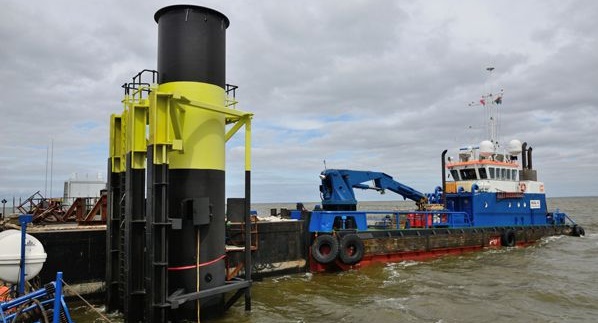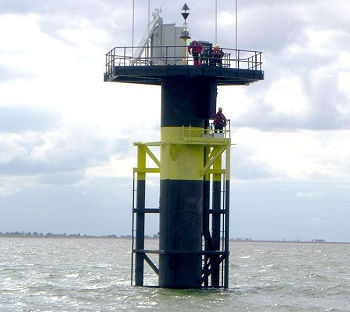VBA- joint venture installs new tidal gauge at The Wash, UK

A 6 million UK-pound project to install a new tidal gauge at The Wash, 4km offshore in Lincolnshire, UK, has been completed by VBA, a joint venture comprising of VolkerStevin, Boskalis Westminster and Atkins.
The system will monitor sea levels around the coastline and will be operational as part of the Environment Agency’s (EA) National tide gauge network and will help improve flood forecasting.
 Last gauge to be placed
Last gauge to be placed
The new installation is the 44th gauge and completes the national network.
This Class A tide gauge - verified by the National oceanography centre - will accurately and reliably record a full tidal range including extreme weather conditions.
Work to deliver this important project to improve flood forecasting involved the installation of a two meter diameter steel monopile, sleeve system, platform, scour protection, and tidal monitoring and lighting equipment.
VBA appointed VolkerStevin International and Stemat Marine Service to assist in the transportation, installation and supply of a specific crane barge to complete the works.
Predict tidal surges
Claire Rose, flood and coastal risk management team leader at the Environment Agency, said: “This new gauge has a practical benefit for local communities as the information it gathers on sea levels will help us predict tidal surges and therefore improve our flood warning service.
“It’s a national important project, too, as it fills in the last gap in the UK’s monitoring network to give us the best picture of tidal conditions across the country.”
Additional equipment on board
Meteorological equipment on board will measure wind speed and direction, and air pressure and temperature, and the Eastern Fisheries and Conservation Association (EFCA) also has equipment on the platform to measure the water’s quality and salinity.
As well as collecting data for the Environment Agency, the gauge’s information on tide levels will also be used by the harbor authority to help boats navigate through The Wash.
Plus, the gauge will be used by the British Armed Forces as a static marker of the end of their testing range, where previously they had used floating buoys.
This news item is based on original publications on the websites of UK Government and VolkerStevin.
More information
VolkerStevin
Preston, UK
+44 1772 708 620
www.volkerstevin.co.uk



